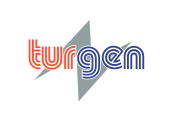As the earth continues to turn into increasingly riskier, anti-money laundering (AML) and also other compliance procedures need to evolve as well. Increased due diligence enhanced due diligence in banking sector analysis (EDD) can be an advanced level of KYC that dives much lower into determining high-risk customers, transactions and business relationships. It includes more than the standard name verification and risk assessment steps of Customer Due Diligence (CDD), to include extra checks, rigid monitoring procedures and more.
Not like CDD, which is typically finished prior to outset a business relationship and can typically be computerized, EDD is triggered simply by specific people, businesses, industries or countries that create a greater risk of money washing or other sorts of fraud. During EDD, the information collected is more in-depth and may incorporate screening designed for financial criminal risks just like sanctions prospect lists, adverse advertising reviews and more.
When to Use Enhanced Due Diligence
When CDD can be described as critical AML requirement for pretty much all companies, it can be difficult to distinguish red flags with respect to high-risk individuals and businesses. That’s so why EDD is used to screen for more complex risk indicators, just like PEPs and their close contacts and family members. It’s as well used to conduct extensive research in to people or entities with a history of economic crime, just like criminal activity, tax evasion, corruption and terrorism.
It is also used to review the organization background of your business, like the details of it is management staff and ultimate beneficial owners (UBOs), and reviewing enterprise documents for the purpose of red flags. If you want to perform EDD, it’s crucial to understand the hazards and how to do it proper.
